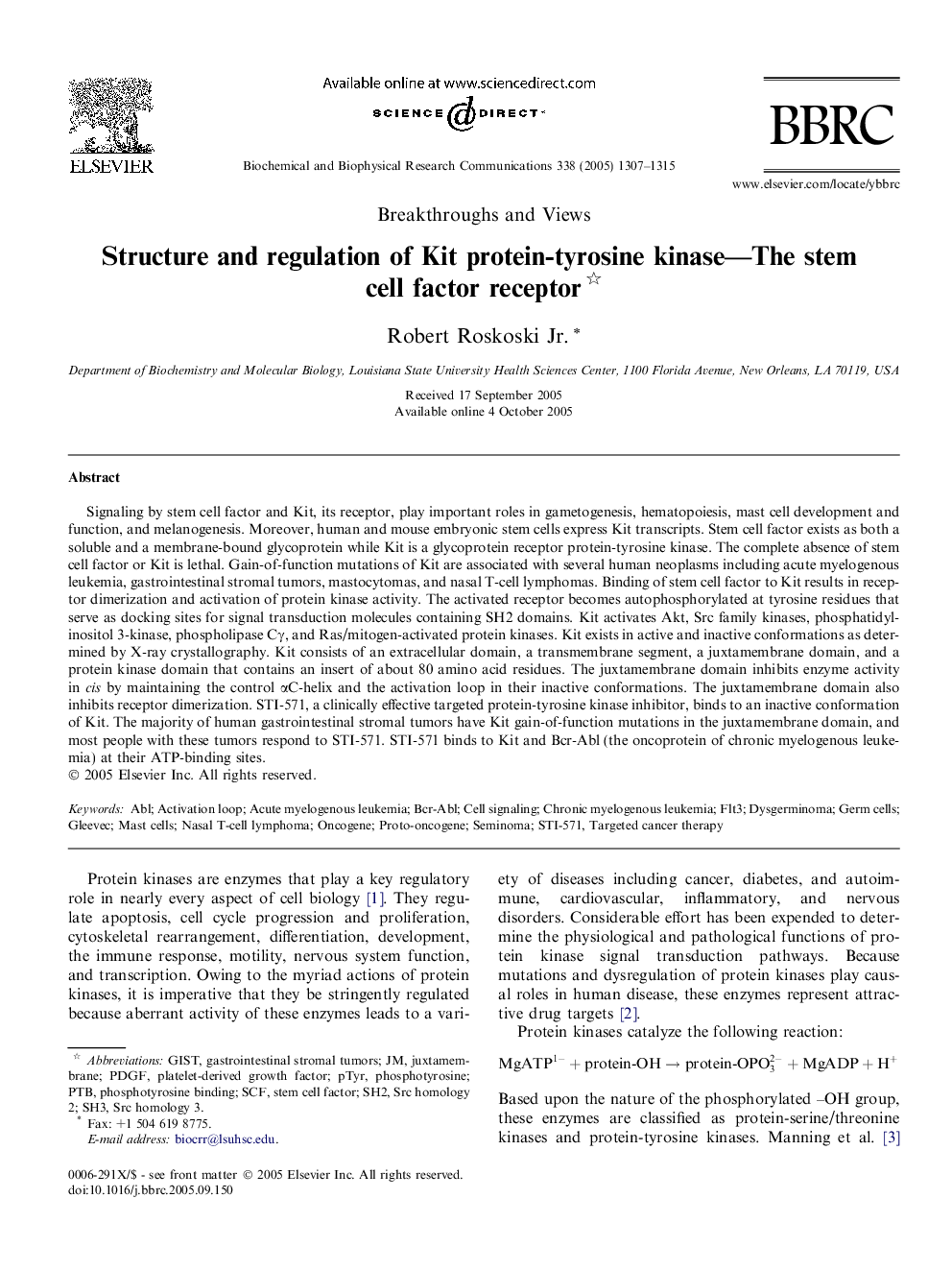| کد مقاله | کد نشریه | سال انتشار | مقاله انگلیسی | نسخه تمام متن |
|---|---|---|---|---|
| 10768831 | 1050816 | 2005 | 9 صفحه PDF | دانلود رایگان |
عنوان انگلیسی مقاله ISI
Structure and regulation of Kit protein-tyrosine kinase-The stem cell factor receptor
دانلود مقاله + سفارش ترجمه
دانلود مقاله ISI انگلیسی
رایگان برای ایرانیان
کلمات کلیدی
Germ cellsABLBCR-ABLFLT3DysgerminomaGleevecSTI-571Oncogene - انکوژنActivation loop - حلقه فعالTargeted cancer therapy - درمان سرطان هدفمندSeminoma - سمینوماCell signaling - سیگنالینگ سلولیAcute myelogenous leukemia - لوسمی حادمیولوزchronic myelogenous leukemia - لوسمی مزمن میلوئیدیMast cells - ماست سل هاProto-oncogene - پروتونوکن
موضوعات مرتبط
علوم زیستی و بیوفناوری
بیوشیمی، ژنتیک و زیست شناسی مولکولی
زیست شیمی
پیش نمایش صفحه اول مقاله

چکیده انگلیسی
Signaling by stem cell factor and Kit, its receptor, play important roles in gametogenesis, hematopoiesis, mast cell development and function, and melanogenesis. Moreover, human and mouse embryonic stem cells express Kit transcripts. Stem cell factor exists as both a soluble and a membrane-bound glycoprotein while Kit is a glycoprotein receptor protein-tyrosine kinase. The complete absence of stem cell factor or Kit is lethal. Gain-of-function mutations of Kit are associated with several human neoplasms including acute myelogenous leukemia, gastrointestinal stromal tumors, mastocytomas, and nasal T-cell lymphomas. Binding of stem cell factor to Kit results in receptor dimerization and activation of protein kinase activity. The activated receptor becomes autophosphorylated at tyrosine residues that serve as docking sites for signal transduction molecules containing SH2 domains. Kit activates Akt, Src family kinases, phosphatidylinositol 3-kinase, phospholipase Cγ, and Ras/mitogen-activated protein kinases. Kit exists in active and inactive conformations as determined by X-ray crystallography. Kit consists of an extracellular domain, a transmembrane segment, a juxtamembrane domain, and a protein kinase domain that contains an insert of about 80 amino acid residues. The juxtamembrane domain inhibits enzyme activity in cis by maintaining the control αC-helix and the activation loop in their inactive conformations. The juxtamembrane domain also inhibits receptor dimerization. STI-571, a clinically effective targeted protein-tyrosine kinase inhibitor, binds to an inactive conformation of Kit. The majority of human gastrointestinal stromal tumors have Kit gain-of-function mutations in the juxtamembrane domain, and most people with these tumors respond to STI-571. STI-571 binds to Kit and Bcr-Abl (the oncoprotein of chronic myelogenous leukemia) at their ATP-binding sites.
ناشر
Database: Elsevier - ScienceDirect (ساینس دایرکت)
Journal: Biochemical and Biophysical Research Communications - Volume 338, Issue 3, 23 December 2005, Pages 1307-1315
Journal: Biochemical and Biophysical Research Communications - Volume 338, Issue 3, 23 December 2005, Pages 1307-1315
نویسندگان
Robert Jr.,